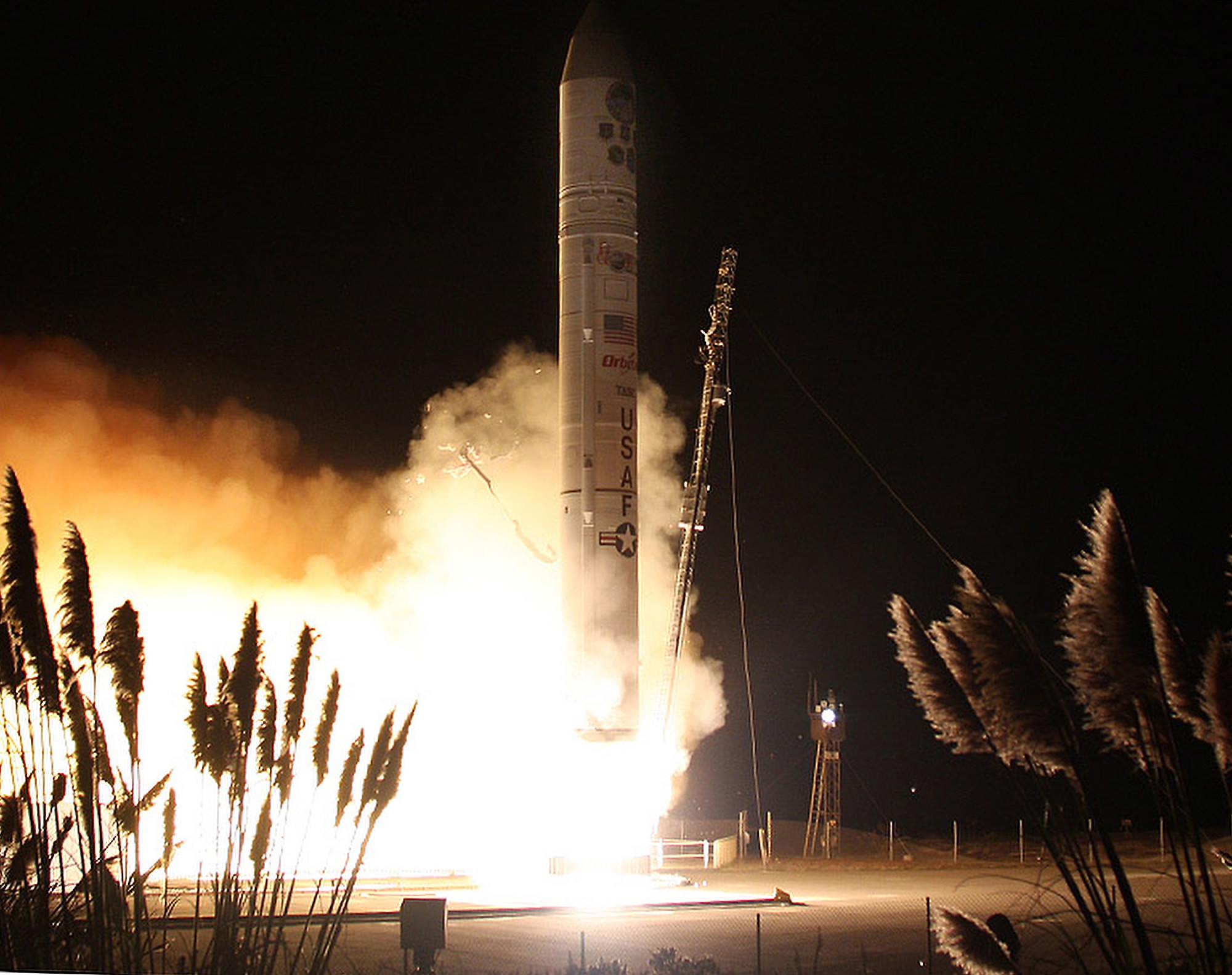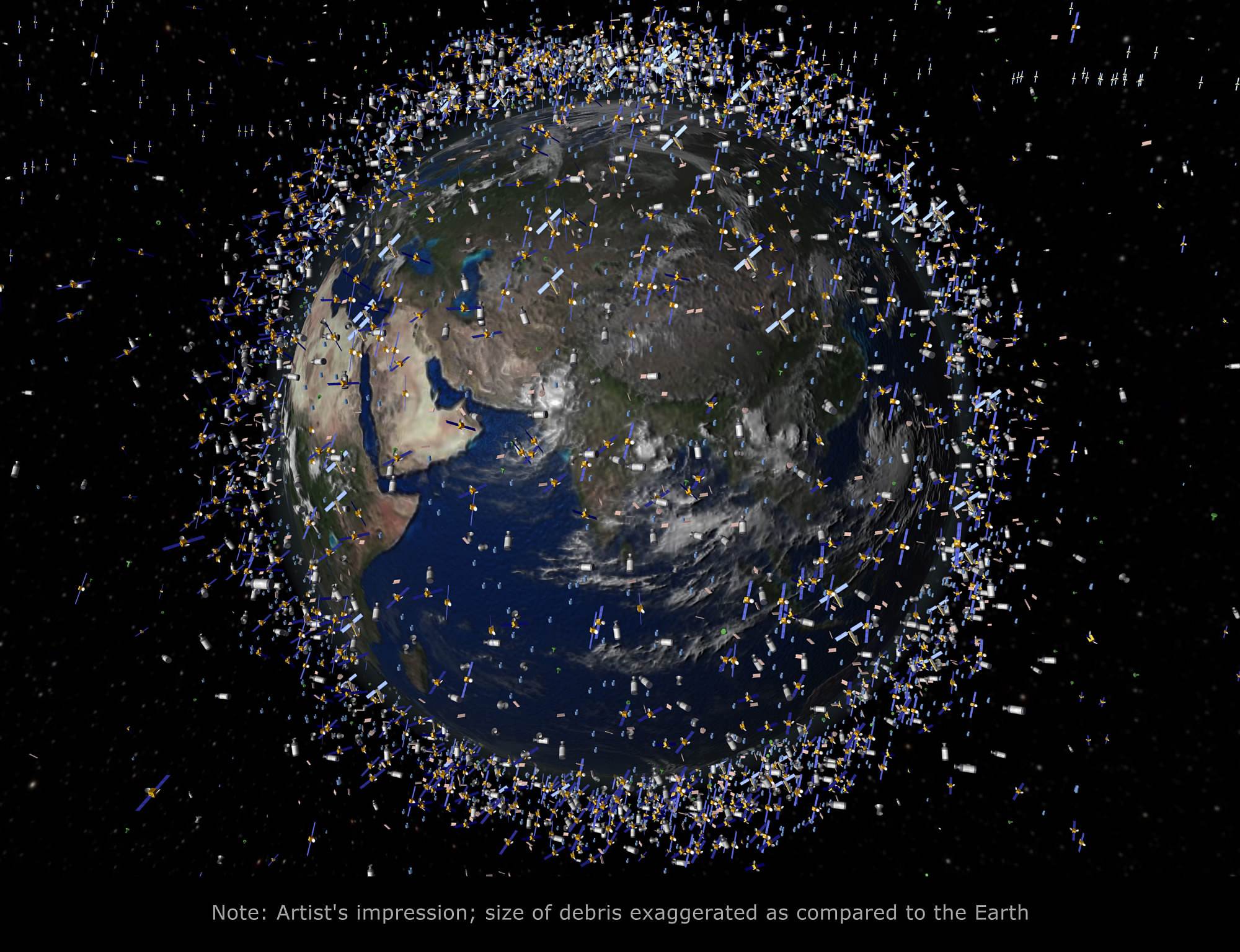Guest commentary by Jasmine Cen
Something as small as an “aspirin” orbiting the earth can be the “bullet” that destroys your internet connection that enables you to read this article. A small discarded screw circling the earth could wipe out the GPS system that the map on your phone relies on.
Leftover debris high above the planet has become a major concern for the risk they pose of potentially colliding into working satellites, as human activity increases in the outer space.
Experts are meeting at the 7th European Conference on Space Debris in Germany from April 18 to April 21 to try and work out how deal with this problem.
The space debris discussion has had its moments, especially when the Hollywood Film “Gravity” brought the issue to the public’s attention. In the movie, for more than an hour, space junk wreaked havoc with satellites and threatened the life of an astronaut played by Sandra Bullock.

A Minotaur rocket with a space surveillance project successfully blasts off leaving behind the earthly limitations imposed on reconnoitering space on September 25, 2010, Vandenberg AFB, California, US. / CFP Photo
Though the possibility of collisions is just around 3.7 percent according to the aerospace engineers, several incidents have already been confirmed. NASA reported that the International Space Station had to move three times during 2014 to prevent collisions from lethal amounts of debris.
China’s presence in space is growing and is taking the issue seriously. According to Yulong Tian, the Secretary of China National Space Administration, the total number of the orbiting pieces which are bigger than a millimeter in diameter is more than 100 million, and together weigh more than a few thousand tons.
Debris only becomes a potential threat when it is greater than a millimeter in diameter and if it is traveling in Lower Earth Orbit and Geostationary Orbit, that’s where most satellites are stationed.
If the piece is larger than five centimeters in diameter, the impact during collision would be similar to getting hit by a bus. When the piece is equal or larger than 10 centimeters in diameter, the collision would be similar to a bomb going off. Fortunately, the scientists say they are capable of monitoring these larger pieces.
The smaller pieces that are closer in diameter to an aspirin pill however are harder to track, but they still could have significant impact on human activity in space and that also means everything down on earth that relies on satellites in space. The diameter of one aspirin is about 11 millimeters. Even an orbiting three-millimeter piece of space junk can create the same amount of destruction as a bullet.
Who is liable for any damage or contamination caused by space debris still remains ambiguous under the United Nation’s Liability Convention, an international law on the peaceful uses of outer space.

This ESA image shows trackable objects in orbit around Earth. / CFP Photo
In his analysis on “Chinese Perspectives on Space Debris Mitigation,” Yun Zhao, Ph.D., the Head of the Department of Law at the University of Hong Kong, writes, “The Liability Convention does not contain a clear definition of ‘fault’; no international legal documents have required a state to remove space debris created by its space activities or take any preventive measures.”
To this day, the preventive measures have been taken voluntarily by different countries and China has been leading the way.
For example the Chinese space program has successfully redesigned the rocket in the ‘Long March’ series to improve its disposal process and protect the space environment. “A White Paper on China's Space Activities in 2016” published by the China’s Information Office of the State Council on December 27, 2016, explains the new design and technology upgrades.
It says, “China has also made breakthroughs in protection design technologies, applying them to the protection projects of spacecraft against space debris. In addition, all Long March carrier rockets have upper stage passivation, and discarded spacecraft are moved out of orbit to protect the space environment.”
But one nation cannot solve the problem by on their own, many agree that there has to be a collective effort to create a clean space environment.
Jianpei Ye, the Chief Commander and Chief Designer of the Chinese Lunar Exploration Program, says that, besides the projects on space debris mitigation and prevention, countries should work together to better coordinate and use the orbital position around the earth more efficiently. Hopefully the 7th European Conference on Space Debris is a step in that direction.
(Jasmine Cen has a background in political science and economics having worked at the European Parliament and covering US politics as a journalist. She has written for both USA Today and Military Times. The article reflects the author’s opinion, not necessarily the view of CGTN.)









